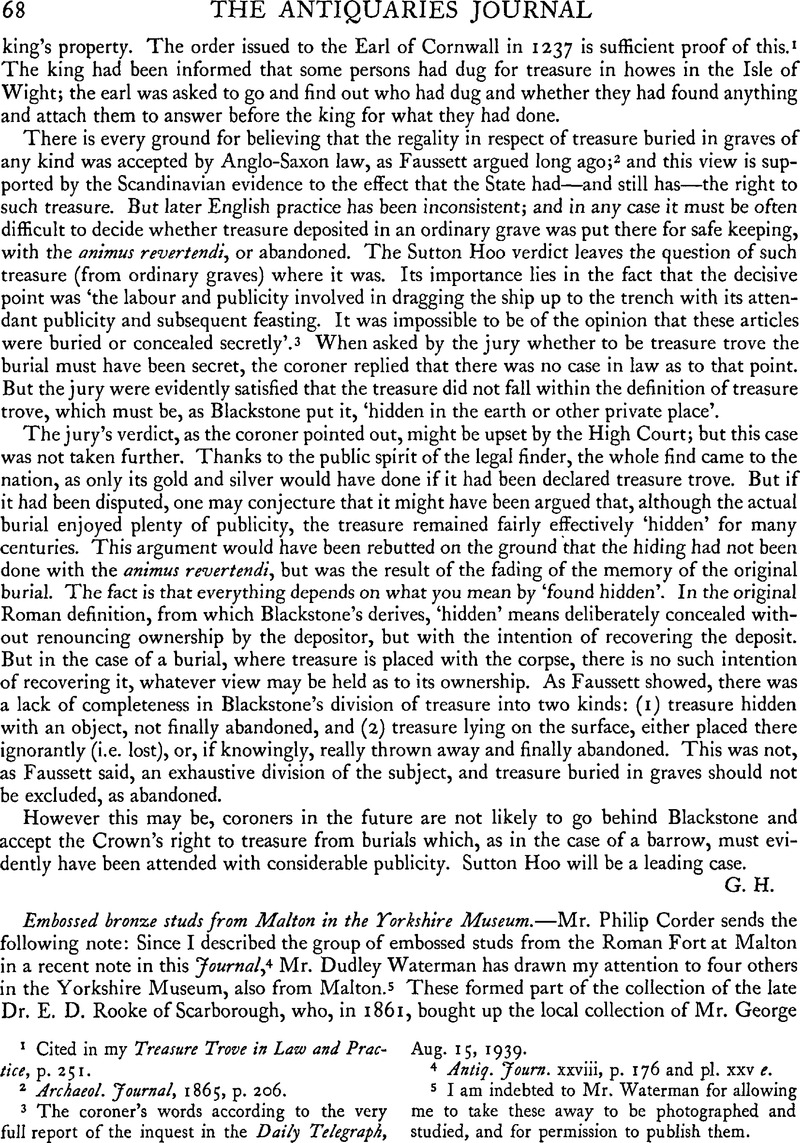No CrossRef data available.
Published online by Cambridge University Press: 29 November 2011

page 68 note 4 Antiq. Journ. xxviii, p. 176 and pl. xxv e.
page 68 note 5 I am indebted to Mr. Waterman for allowing me to take these away to be photographed and studied, and for permission to publish them.
page 69 note 1 For further particulars of this collection, see Kitson Clark, Gazetteer of Roman Remains in East Yorkshire, p. 101.
page 69 note 2 I am much indebted to Mr. H. W. Poulter for handing to me a small note-book, which he acquired some years ago in Scarborough, inscribed, ‘E. D. Rooke, Dec. 26th, 1875. Magic Book.’ Among other things this contains a list of 203 objects formerly in the Rooke Collection. No. 24 reads, ‘Four Roman Bronze Buttons, Pye Pits, Malton, 1857.’ As there are no similar objects mentioned in the list, I think it safe to conclude that this entry refers to our four studs. The Pye Pits were situated immediately north of the fort at Malton and in the past many finds have been made there, including the tombstone of Aurelius Macrinus, now lost (C.I.L. vii, 264).
page 69 note 3 London in Roman Times (L.M. Cat. No. 3, 1930), p. 112 and fig. 37, 1.
page 69 note 4 Mistakenly described as a sceptre.
page 69 note 5 Ibid., fig. 37, 2.
page 69 note 6 Arch. Camb., Dec. 1940, p. 132 and fig. 6, 20.
page 69 note 7 Curie, New stead, p. 175 and pl. xxxi.
page 70 note 1 One of these appeared to contain traces of a whitish paste. Dr. Plenderleith, who kindly examined this in the British Museum laboratory, confirmed my suspicion that this was a trace of the card to which it had once been affixed.
page 70 note 2 Bushe-Fox, Fourth Report on the Excavations at the Roman Fort at Richborough, Kent (Soc. Ant. Research Rep. No. 16, 1949), p. 140 and pl. XLII.
page 70 note 3 Antiq. Journ. xxi, Jan. 1941, pp. 1–8.Google Scholar